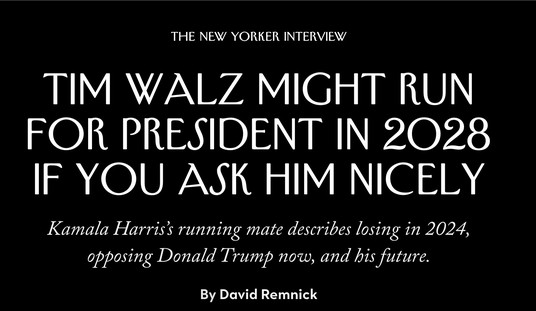It’s not great news for the White House, but it could have been a lot worse. The US economy’s growth slowed to 2.1% in the second quarter, down a full point from Q1. However, with economists predicting a recession right around the corner, the growth is still substantial enough to look positive:
Real gross domestic product (GDP) increased at an annual rate of 2.1 percent in the second quarter of 2019 (table 1), according to the “advance” estimate released by the Bureau of Economic Analysis. In the first quarter, real GDP increased 3.1 percent.
The Bureau’s second-quarter advance estimate released today is based on source data that are incomplete or subject to further revision by the source agency (see “Source Data for the Advance Estimate” on page 2). The “second” estimate for the second quarter, based on more complete data, will be released on August 29, 2019.
The increase in real GDP in the second quarter reflected positive contributions from personal consumption expenditures (PCE), federal government spending, and state and local government spending that were partly offset by negative contributions from private inventory investment, exports, nonresidential fixed investment and residential fixed investment. Imports, which are a subtraction in the calculation of GDP, increased (table 2).
The deceleration in real GDP in the second quarter reflected downturns in inventory investment, exports, and nonresidential fixed investment. These downturns were partly offset by accelerations in PCE and federal government spending.
One point was unalloyed good news for Donald Trump. Disposable personal income leaped upward by almost 5% in Q2, the result of a tight labor market and continued economic expansion. It follows a similar jump in Q1 and is at least one factor in the best increase in consumer spending in nearly two years.
There are other glimmers of hope as well. Final sales of domestic product increased by 3.0% in Q2, which suggests that retailers burned through inventory backlogs over the last three months. If consumer spending stays high, new orders should begin to make up that difference. Yesterday’s durable-goods report showing an increase of 2.0% in June, following a -2.3% decline in May, suggests that better news is on the way. Also, exports took a big hit in Q2, dropping 5.2% while imports stayed mainly static. If that’s a one-time glitch, then Q3 should be cheerier, but that might depend on whether Trump can draw his trade wars to a close.
No other issue is more important to Trump than the economy. Despite all of the other controversies and noise around Trump, some of them created and stoked by Trump himself, none of them are as do-or-die as the economy. As long as the economy keeps growing and producing real wage increases for workers, Trump can win re-election. Any kind of slowdown makes him vulnerable, and even this 2.1% rate might raise eyebrows.
So far, though, the media is breathing sighs of relief. CNBC’s Jeff Cox notes that recession fears will likely recede now:
Growth decelerated in the second quarter, but not by as much as Wall Street thought, as tariffs and a global slowdown weighed on the U.S. economy, the Commerce Department reported Friday.
GDP increased 2.1%, down from 3.1% from the first quarter, the weakest increase since the first quarter of 2017 as President Donald Trump took office. Dow Jones estimates were for 2% growth.
However, the underlying numbers in the report seemed to take steam out of the recession fears that have been much of the talk among economists and policymakers at the Federal Reserve.
“The recession talk was always overstated,” said Michael Arone, chief investment strategist at State Street Global Advisors. “Those that were doing the Chicken Little, the sky is falling, we’re headed for recession talk were clearly early in that assessment. The economic data continue to suggest that the economy isn’t near recession, at least in the next year or so.”
Trump needs that to be more like … eighteen months. To get that, though, he’ll have to settle accounts with China and get the USMCA passed in Congress.
Update: Stock markets are sharply up as this update is being written, with investors apparently agreeing with Trump’s overall assessment:
https://twitter.com/realDonaldTrump/status/1154763413358370816
“Not bad” is a little bit of an understatement, actually. It’s pretty good, especially in the context of the global economy. That’s the bigger anchor, especially the trade disputes that at least for one quarter hit our exports hard.








Join the conversation as a VIP Member